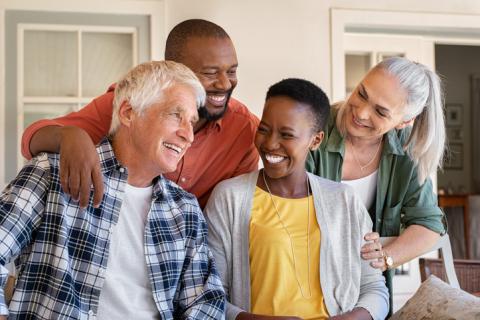Do Your Brain a Favor—Spend More Time with Others
For one thing, when we spend most of our time alone, we miss out on a great source of mental stimulation. Our brains are wired for interacting with others. Conversation is a complex activity. We listen, we think, we make decisions, we interpret what the other person might be thinking … in short, interacting with others is just about the best brain exercise there is!
The condition of loneliness is incredibly damaging to the brain. Studies show it damages our immune system, raises our blood pressure, increases stress and depression—and even hastens cellular aging.
People who feel alone are less likely and motivated to follow brain-healthy lifestyle choices. Family and friends urge each other to have regular checkups and exercise. And people who eat alone are more likely to subsist on processed, less nutritious foods.
Loneliness promotes habits that damage the brain. A sense of isolation increases the likelihood that we will smoke, drink too much alcohol, or use dangerous drugs. It increases sensations of pain, which might make us use more pain medication than is safe.
Overcoming barriers to social contact as we grow older
Staying socially connected can be harder in our later years. Mobility and sensory challenges make it harder to get out and about. We might lose our spouse, siblings and other close loved ones. We no longer go to work. The kids grow up and move away. Maybe for the first time in our lives, we need to actively seek out social connection. But it’s definitely worth it! Here are some suggestions:
- Spend time with family. Babysit the grandkids or great-grandkids if you can; intergenerational contact is great for the brain.
- Spend time with friends. Experts say that non-family social ties may be even more beneficial than family time! Call a friend, plan a walking date, invite a neighbor over for coffee.
- Make a habit of seeking out interactions all day. Say hi to the mailman and the bus driver. Chat with the checker at the market. The experts say that even the briefest of interactions with a wide variety of people are beneficial. These “weak ties” nourish our brain.
- Go online. While Facebook friends and chat room conversations aren’t as beneficial as in-person socialization, they do provide much of the brain exercise and emotional satisfaction of in-person interactions.
- Get a part-time job. For many of us, work was where the people were. Today, many older adults are picking up a few bucks and finding social context in a part-time job.
- Join a club or take a class. Take up a hobby that you can do with others—anything from quilting to playing bridge to performing in an amateur musical group.
- Volunteering might be the most potent anti-loneliness drug there is, and today, senior volunteers are more important than ever. There are volunteer opportunities for almost everyone—in schools, with service organizations and faith communities, and even with political organizations (so long as you watch your blood pressure—that’s an important factor in brain health).
- Move to a senior living community. While aging in place in your own home helps maintain long-time social connections, many seniors become isolated there. Senior living communities are a great place to meet people and find a constant source of social interaction.
- Memory care. For seniors who are already living with memory loss, appropriate activities at an adult day center, senior center or memory care community can lift the spirits and slow the progression of the disease.
One more note: Alzheimer’s disease can certainly make it harder to maintain social connections. But studies have also found that certain brain changes associated with dementia can independently increase feelings of loneliness. If you or a loved one seem to feel more lonely even though you haven’t changed your usual routine, report this to the doctor.
